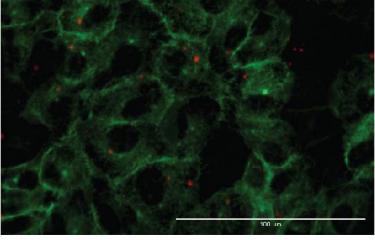Scientists working in France have selected a new class of molecules known as ruthenium-modified aptamers to eliminate Streptococcus pneumoniae bacteria, or pneumococcal disease. Their pioneering approach is an alternative method for combating these bacteria, which can be resistant to traditional antimicrobial treatments.
Scientists from Chimie ParisTech – PSL and the Institut Pasteur (Université Paris Cité) have published a discovery in the Journal of the American Chemical Society that opens up new prospects for tackling bacterial infections and antimicrobial resistance. Antimicrobial resistance occurs when bacteria or viruses evolve over time and existing drugs are no longer effective in treating them.
Long-term scientific collaboration to obtain ruthenium-modified aptamers
Marcel Hollenstein, Head of the Institut Pasteur's Bioorganic Chemistry of Nucleic Acids Unit, Gilles Gasser from the Institute of Chemistry for Life and Health Sciences (Chimie ParisTech – PSL) and Mélanie Hamon, Head of the Institut Pasteur's Chromatin and Infection Unit, collaborated on this project.
The scientists chemically modified aptamers (short DNA strands capable of binding to targets) by equipping them with ruthenium polypyridyl complexes. These modified nucleic acids selectively target Streptococcus pneumoniae bacteria (also known as pneumococci) to destroy them. Like many other bacteria, S. pneumoniae, responsible for pneumococcal disease, is becoming resistant to antibiotics, so finding an effective treatment is crucial. It has also been shown that pneumococci can have a lasting effect on cells. The emergence of antibiotic-resistant strains is therefore a major cause for concern.
An innovative photodynamic therapy approach to tackle pathogenic bacteria
Ruthenium complexes are molecules containing a metal atom, in this case ruthenium. Over the past few years, metal complexes (with gold, iron, copper, ruthenium or other metals) have been shown to be effective against cancer cells in vitro. This new research transposes the principle to bacterial infections.
Ruthenium complexes act as photosensitizers – when activated by light, they cause bacterial death. Photodynamic therapy is a method already used to treat some forms of cancer. It is based on a harmless molecule that becomes cytotoxic after being activated by light.
"We have developed therapeutic oligonucleotides (aptamers) that improve the specificity of the treatment, demonstrating that this approach could be used to combat antimicrobial resistance," explains Marcel Hollenstein. The scientists prepared nucleotides equipped with various ruthenium complexes, then demonstrated that certain DNA polymerase enzymes could synthesize oligonucleotides containing these complexes. Using a specific process known as SELEX, they found an aptamer that showed a high affinity for Streptococcus pneumoniae.
High hopes for ruthenium complexes
These results, obtained after seven years of research, demonstrate how nucleotides modified with large molecules can be used to create potent aptamers to tackle entire bacterial targets. This is a promising approach in combating antimicrobial resistance.
This research was partly financed by the Institut Pasteur's own funds and by a grant from the Joe W. & Dorothy Dorsett Brown Foundation. It also received funding from the ANR and Inserm (the "FusTarG" project), as well as two grants from the Drugs, Toxicology, Chemistry and Imaging (MTCI) Doctoral School and a postdoctoral grant from the ARC Foundation.
Source :
Selection of Ruthenium Polypyridyl Complex-Modified Aptamers for Photodynamic Therapy against Streptococcus Pneumonia, Journal of the American Chemical Society, November 8, 2025.
Marie Flamme, Germain Niogret, Luke McKenzie, Usman Akhtar, Fabienne Levi-Acobas, Albert Gandioso, Emma Clarke, Pierre Nicolas Bizat, Michael Connor, Mélanie A. Hamon, Gilles Gasser and Marcel Hollenstein.
See also the Bioorganic Chemistry of Nucleic Acids Group website.
For more information, please visit



